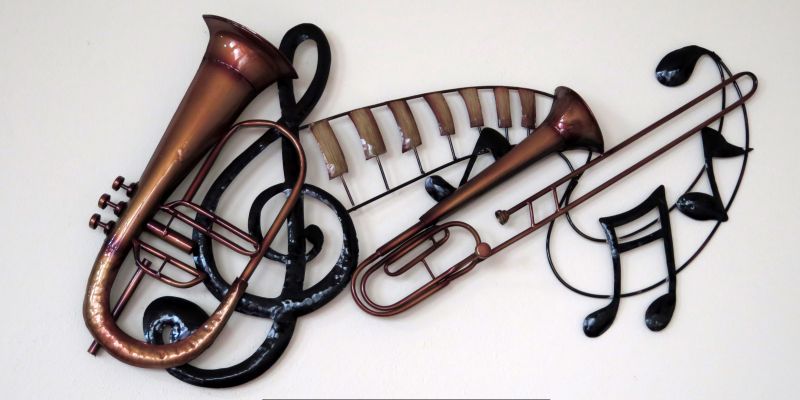Fret buzz is a common issue that many guitarists encounter, regardless of their skill level. It occurs when a string vibrates against the frets, producing an unwanted buzzing sound instead of a clean note. This phenomenon can be frustrating, especially for those who are striving for a polished performance.
The causes of fret buzz can vary widely, ranging from improper setup to environmental factors. Identifying the source of the problem is crucial for any guitarist looking to maintain their instrument’s playability and sound quality. One of the primary culprits behind fret buzz is the guitar’s setup.
If the neck is not properly adjusted, it can lead to insufficient neck relief, causing the strings to sit too low and come into contact with the frets. Additionally, worn or uneven frets can exacerbate the issue, leading to inconsistent buzzing across different areas of the fretboard. Guitarists should be vigilant in listening for buzz when playing, as it can manifest differently depending on the string and fret combination.
By understanding the causes and symptoms of fret buzz, players can take proactive steps to remedy the situation.
Key Takeaways
- Fret buzz is caused by the string hitting against the frets, and can be identified by a buzzing or rattling sound when playing a note.
- Checking your guitar setup involves assessing the neck relief, action, and nut height to ensure proper playability and intonation.
- Fret leveling and dressing issues can be addressed by filing down uneven frets and polishing them to ensure a smooth playing surface.
- Examining the condition of your frets and fretboard involves checking for wear, dents, and unevenness that can affect playability.
- Adjusting the bridge and saddle for proper string height can help eliminate fret buzz and improve overall playability.
- Evaluating the string gauge and tension can help determine if the strings are contributing to fret buzz and if a different setup is needed.
- Environmental factors, such as humidity, can affect the playability of your guitar and should be considered when addressing fret buzz issues.
- Seeking professional help from a luthier or guitar technician is recommended when fret buzz issues persist or if major adjustments are needed.
Checking Your Guitar Setup: Neck Relief, Action, and Nut Height
A proper guitar setup is essential for optimal playability and sound quality. One of the first aspects to examine is neck relief, which refers to the slight curvature of the neck that allows strings to vibrate freely without hitting the frets. To check neck relief, a guitarist can press down on the first and last frets of a string and measure the gap at the 8th fret.
If the gap is too small or nonexistent, it may indicate that the neck is too straight or even back-bowed, leading to fret buzz. In addition to neck relief, action—the height of the strings above the fretboard—plays a significant role in preventing fret buzz. If the action is set too low, strings may come into contact with frets during play.
Conversely, if the action is too high, it can make playing uncomfortable and difficult. The nut height also contributes to action; if the nut slots are cut too low, it can lead to buzzing in the open strings. Guitarists should regularly assess these elements to ensure their instrument is set up for optimal performance.
Addressing Fret Leveling and Dressing Issues

Fret leveling and dressing are critical processes that can significantly impact a guitar’s playability. Over time, frets can wear unevenly due to regular use, leading to high and low spots that cause buzzing when strings are played. A fret leveling job involves sanding down the frets to create a uniform height across the fretboard.
This process requires precision and skill, as uneven frets can lead to further complications if not addressed properly. Dressing frets involves polishing them to remove any grooves or tarnish that may have developed over time. This not only enhances playability but also improves the overall tone of the instrument.
A well-dressed fretboard allows for smoother string bends and cleaner notes, reducing the likelihood of fret buzz. Guitarists should consider having their frets leveled and dressed periodically, especially if they notice any buzzing or difficulty in playing certain notes.
Examining the Condition of Your Frets and Fretboard
| Aspect | Measurement |
|---|---|
| Fret Wear | Depth of divots in frets |
| Fretboard Flatness | Amount of bow or relief in the fretboard |
| Fret Height Discrepancies | Differences in height between frets |
| Fretboard Cleanliness | Amount of dirt and grime on the fretboard |
The condition of both frets and fretboards is paramount in maintaining a guitar’s sound quality and playability. Worn frets can lead to buzzing and intonation issues, while a dirty or damaged fretboard can affect string action and overall comfort while playing. Guitarists should regularly inspect their frets for signs of wear, such as grooves or flat spots that may have developed over time.
If any irregularities are detected, it may be time for a professional fret leveling or replacement. The fretboard itself also requires attention; dirt, grime, and oil from fingers can accumulate over time, affecting both aesthetics and playability. Regular cleaning with appropriate products can help maintain its condition.
Additionally, fluctuations in humidity can cause wood to expand or contract, leading to potential issues with both frets and fretboards. By keeping an eye on these factors, guitarists can ensure their instrument remains in top condition.
Adjusting the Bridge and Saddle for Proper String Height
The bridge and saddle are crucial components in determining string height and overall playability. If either is improperly adjusted, it can lead to issues such as fret buzz or difficulty in playing certain chords. The saddle height affects how high or low the strings sit above the fretboard; if it’s too low, strings may buzz against frets during play.
Conversely, if it’s too high, it can create an uncomfortable playing experience. To adjust the bridge and saddle effectively, guitarists should first assess their current setup by measuring string height at various points along the fretboard. Making small adjustments can lead to significant improvements in playability.
It’s important for players to understand that changes made to one aspect of setup can affect others; for instance, lowering the saddle may require adjustments to neck relief or action as well. A well-adjusted bridge and saddle contribute greatly to a guitar’s overall performance.
Evaluating the String Gauge and Tension
String gauge and tension are often overlooked factors that can significantly influence a guitar’s sound and playability. Heavier gauge strings produce a fuller tone but require more tension, which can lead to increased stress on the neck and potentially exacerbate issues like fret buzz if not properly managed. Conversely, lighter gauge strings are easier to play but may produce less volume and sustain.
Guitarists should consider their playing style when selecting string gauge; those who prefer aggressive strumming or bending may benefit from heavier strings, while fingerstyle players might opt for lighter options. It’s also essential to keep in mind that changing string gauge may necessitate adjustments in setup, including neck relief and action height. By evaluating string gauge and tension regularly, players can ensure their instrument remains comfortable and responsive.
Dealing with Environmental Factors and Humidity
Environmental factors play a significant role in a guitar’s performance and condition. Humidity levels can cause wood to swell or shrink, leading to changes in neck relief and action height that may result in fret buzz or other issues. Ideally, guitars should be kept in an environment with stable humidity levels—typically between 40% and 60%—to prevent damage.
Guitarists should be particularly cautious during seasonal changes when humidity levels fluctuate significantly. Using a hygrometer can help monitor conditions within a case or room where guitars are stored. Additionally, employing humidifiers or dehumidifiers as needed can protect instruments from extreme conditions that could lead to warping or cracking.
By being proactive about environmental factors, players can maintain their guitars’ integrity over time.
Seeking Professional Help: When to Consult a Luthier or Guitar Technician
While many guitarists are capable of performing basic setups and maintenance on their instruments, there comes a time when seeking professional help is necessary. A skilled luthier or guitar technician possesses specialized knowledge and tools that allow them to address complex issues such as fret leveling, neck adjustments, or intricate repairs that may be beyond a player’s capabilities. Consulting a professional is particularly advisable when significant problems arise—such as persistent fret buzz despite attempts at adjustment—or when a player notices changes in sound quality that cannot be attributed to simple factors like string gauge or action height.
Regular visits to a luthier for maintenance can also help prevent larger issues from developing over time. By recognizing when professional assistance is needed, guitarists can ensure their instruments remain in optimal playing condition for years to come.
If you are struggling with fret buzz on your guitar, you may want to check out this article on optimizing asset lifecycles with enterprise asset management. This article discusses how to effectively manage and maintain your assets to ensure they are performing at their best, which can also be applied to maintaining the quality and sound of your guitar. By following the tips and strategies outlined in this article, you may be able to eliminate fret buzz and improve the overall performance of your instrument.
FAQs
What is fret buzz on a guitar?
Fret buzz on a guitar occurs when the string makes contact with a fret and produces a buzzing sound, rather than a clear note.
What causes fret buzz on a guitar?
Fret buzz can be caused by a variety of factors, including uneven frets, a warped neck, improper string height, or worn out frets.
How can fret buzz be fixed on a guitar?
Fret buzz can be fixed by adjusting the truss rod to straighten the neck, adjusting the string height at the bridge, leveling and dressing the frets, or using heavier gauge strings.
Can fret buzz damage my guitar?
Fret buzz itself does not typically cause damage to the guitar, but it can affect the playability and sound of the instrument. However, if left unaddressed, the underlying issues causing the fret buzz could potentially lead to damage over time.
Is fret buzz a common issue with guitars?
Fret buzz is a common issue that many guitarists encounter, especially with changes in temperature and humidity that can affect the neck and strings. Regular maintenance and setup adjustments can help prevent and address fret buzz.



